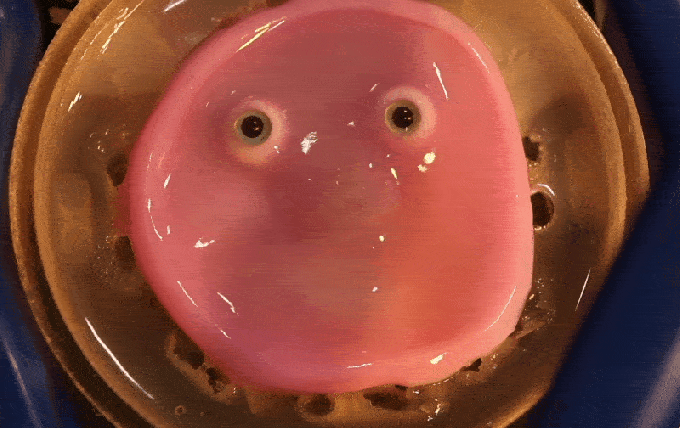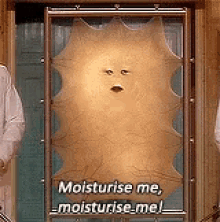Original publication: https://www.cell.com/cell-reports-physical-science/fulltext/S2666-3864(24)00335-7
Wake up babe, new SCP just dropped.


The article made that joke too, and… Yeah it’s spot on.
SCP? Sane Clown Posse?
Just in case you don’t know and are one of the lucky 10000 today:
https://scp-wiki.wikidot.com/scp-series
enjoy!
Sexy Clown Pose
Sexagenarian Clown Pussy
Yep! It’s just like Insane Clown Posse, but with therapy.
It’s horror fanfiction in a shared universe.
It’s just as mediocre and uneven as you might expect from that description, but the Internet acts like it’s amazing as a joke or something I guess? Like the Star Wars prequels.
Some of them are really good, but yeah some are just okay.
Imagine waking up and seeing a robot with that face standing above you.

‘Living tissue over a metal endoskeleton.’

And for the rest of my days, upon needing a sharp object, “I require a cutting tool.”
Glorious.

Me: “Reading the technology community will be safe before bed”
OP: “Nah.”
Fuck this I read it first thing in the morning
JFC just give it an LCD screen head that makes emojis and knock this uncanny valley shit off. I’d rather have Codsworth or R2D2 than this homunculus or some latex-faced simulacrum.


R2D2
I think prince Xizor had a fuckable bodyguard droid in the EU. But in general employing living beings was cheaper.
What about Kevin Spacey in a robot on the moon?
I’d be beside myself.
You say thSt until you can print off Natalie Dormer and a clone of the former and stick your dick in it.
The least they can do is put googly eyes on it. C’mon, bare minimum effort lol.

This is both really cool, and really unsettling. I wonder if this research might help in the other direction as well, such as with transplants and grafts
That was my first thought too; would this improve treatment for serious burn victims and such. Sounds like what they’ve made is better overall for sticking to applied surfaces and moving without tearing. Heck, maybe this could even lead to prosthetics that allow physical sensation
This was mentioned in the Discussion part of their paper:
The activity of facial muscles involved in forming expressions such as smiles is closely linked to the development of wrinkles. One significant next step in this research is to leverage this model to enhance our understanding of the mechanisms underlying wrinkle formation. Moreover, applying this knowledge to recreate such expressions on a chip could find applications in the cosmetics industry and the orthopedic surgery industry. Additionally, this study performed actuation on a dermis equivalent by controlling mechanical actuators positioned beneath the dermis equivalent. Substituting this mechanical actuator with cultured muscle tissue presents an intriguing prospect in the realization of a higher degree of biomimetics. Examining the correlation between facial muscle contractions and resulting facial expression can offer insights into the physiological aspects of emotion, leading to new exploration in the treatment of diseases, such as facial paralysis surgery.
Very cool, thank you!
…but…why? What is the point of living skin on machines? Even humans do everything they can to make their skin not look human :D
So they can build a cybernetic organism. Living tissue over a metal endoskeleton.
synthetic playmates…got it 👯
The 600 series had rubber skin. We spotted them easy, but these are new. They look human - sweat, bad breath, everything. Very hard to spot.
It would be cool if somebody missing an arm could get a cybernetic replacement that looks and feels real.
That’s the only situation I can imagine where maintaining a living skin is worth the cost. I can’t even keep plants alive.
Looks and feels real? I’m sorry but if i’m getting a cyberpunk upgrade it will be gold, chrome, or matte neon plastic. There are no other options ya gonk.
deleted by creator
From the article
Cultured skin, as they put it, can heal itself, carry biological sensors like our own to provide sensitive touch, and could also have benefits in medical or human interaction contexts.
Skin is extremely flexible,water proof and self-repairable.
The self-repairable part is odd to me.You need to keep feeding, oxygenating it and to prevent infections, otherwise it will rot :S Besides, on humans the healing relies on blood for platelets and crusts to form and a whole immune system…it needs too much babysitting to be called “self-healing”.
But it does heal. Efficiently be damned. That’s not what you care about with mad science. Results are all that matter in mad science, good results or bad results you just have an insatiable desire to see what happens if
I guess there’s a market for… skin contact?
So you can send the robot back in time, obviously.
robot girlfriend duh
So they can use time machines that somehow only work for living matter
And what does that skin feed off of?
Do you really want to know? There are some things that the human mind is not meant to contemplate.
The human mind is a curious mind.
If that skin is just copy/pasted without nourishment it’ll rotten away, decaying in a sea of pus and putrid, gangrenic tissue, festering away as maggots feast on it.
So if these scientists are half-serious about their grants then they should consider a way to feed the skin.
I was more suggesting that it might be a bit eldritch, but sometimes humor doesn’t come across quite right/
The linked paper is focused on studying the ‘perforation-type anchor’ they use to hold the tissue to the mold as it grows, rather than keeping it alive afterwards. During growth the tissue and mold were submerged, or partially submerged, in a suitable medium to keep the cells healthy, and it was only when the resulting models were tested that they were removed (although one test did seem to involve letting it dry out to see if the anchors held). Growing the various layers of cells seems to be a solved problem, and I suspect that includes keeping them supplied with nutrients and such, so the authors aren’t examining that. What’s not solved is how to keep the tissue attached to a robot, which is what the authors were studying.
Sorry, I’m too stupid to heed warnings
Is the one on the left meant to look like zuck?
Don’t judge. He has a lot of layers to put on before he goes out in public.
If the Internet has taught me anything… I know someone out there took one look and said 'imma fuck this thing. ’
Rule 37?
Rule
37?34Right! There’s even a Stross about it.
34 is “there is porn of everything, no exceptions”.
That’s a boring cover of a description.
If it exists, there is porn of it
… kill me …
I can’t wait for them to make a vagina next.
Looks like mark zuckerburg
Life imitates art



















